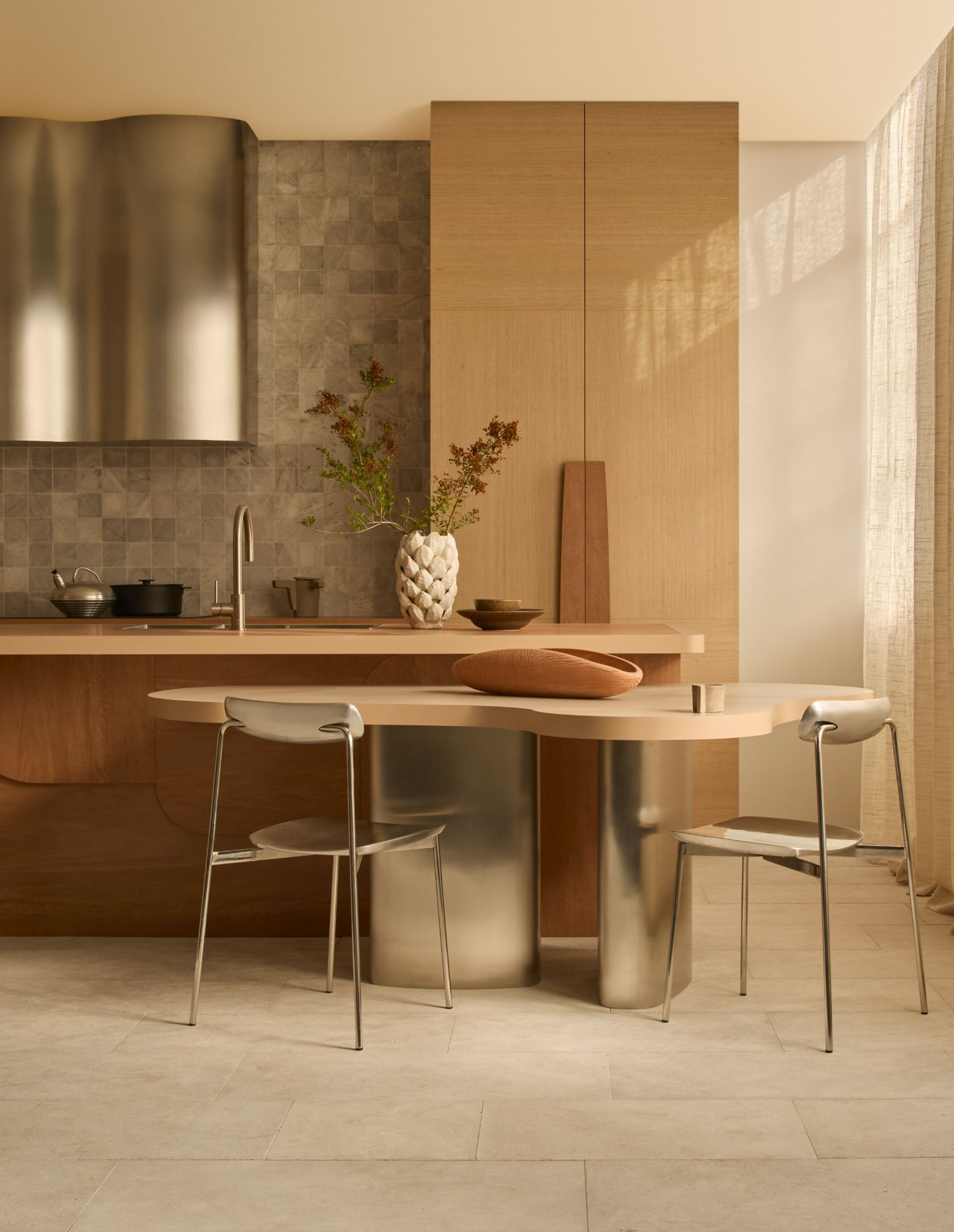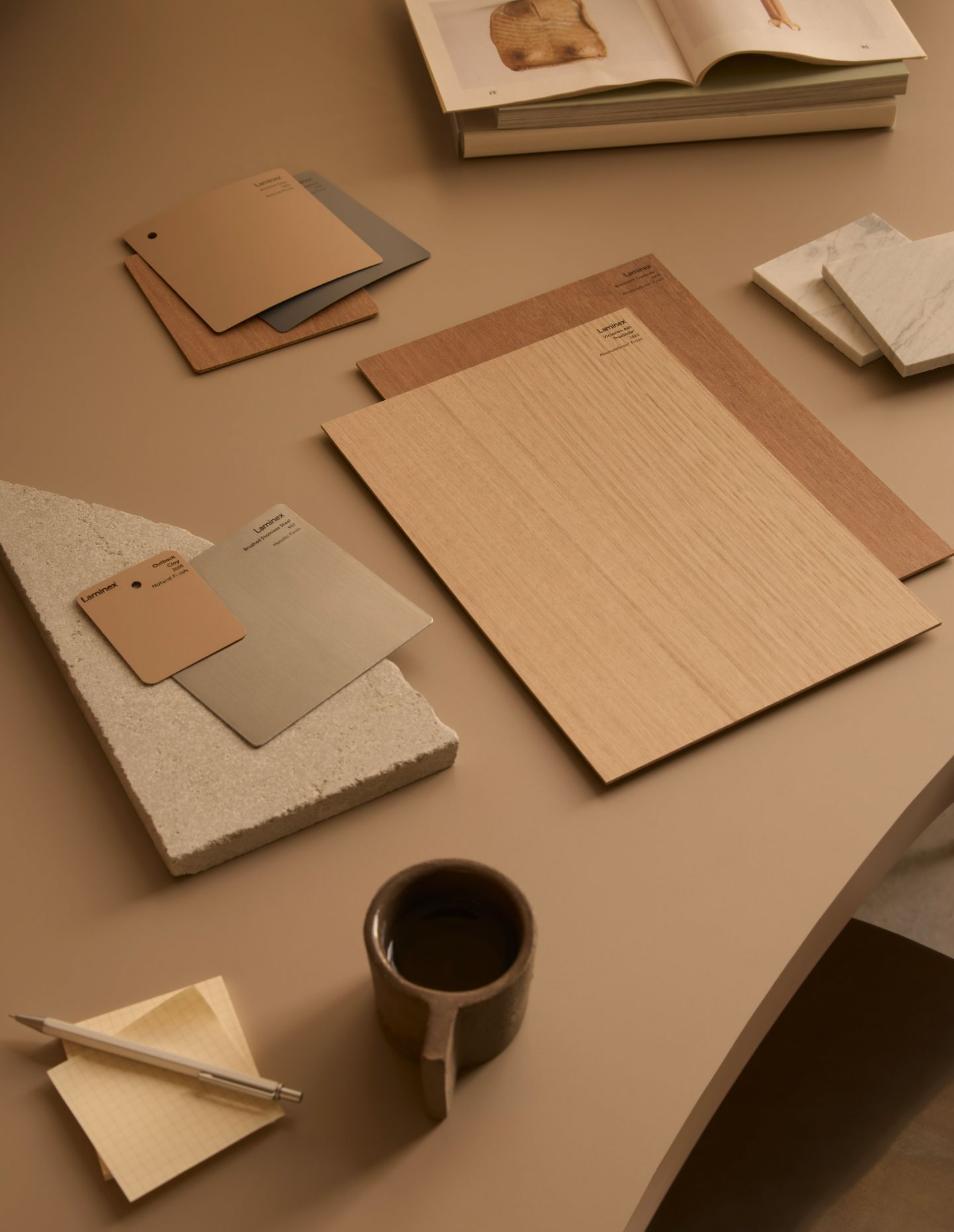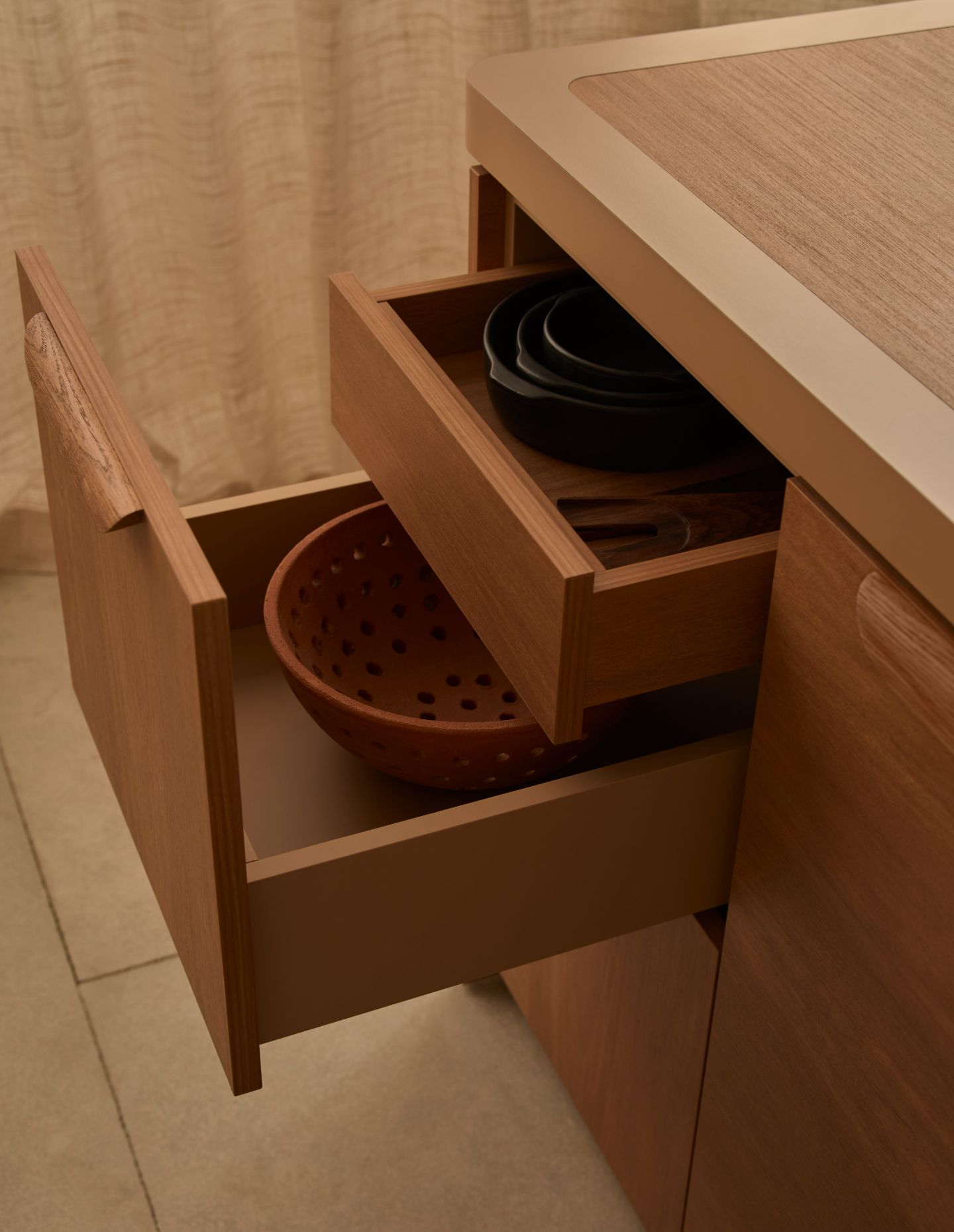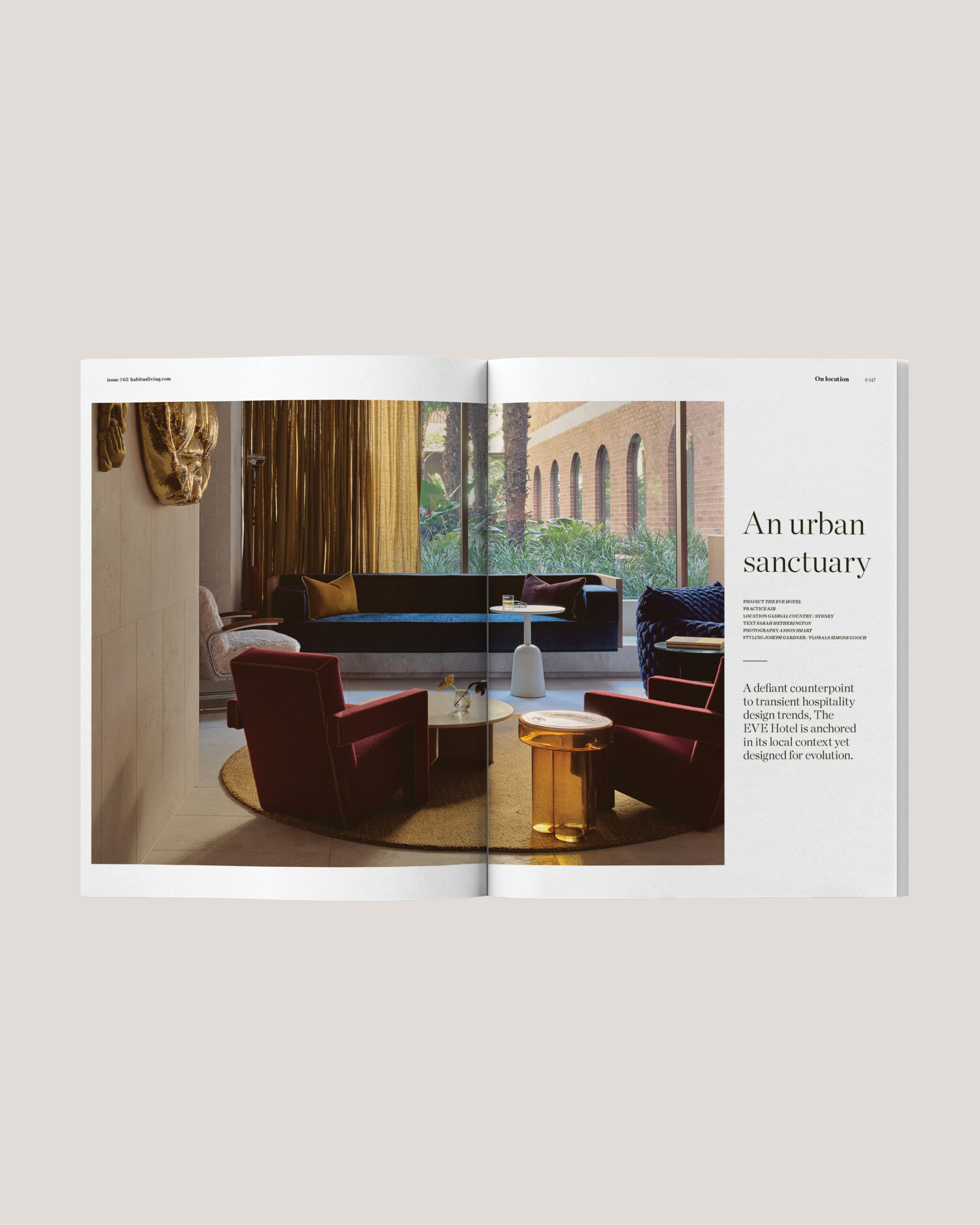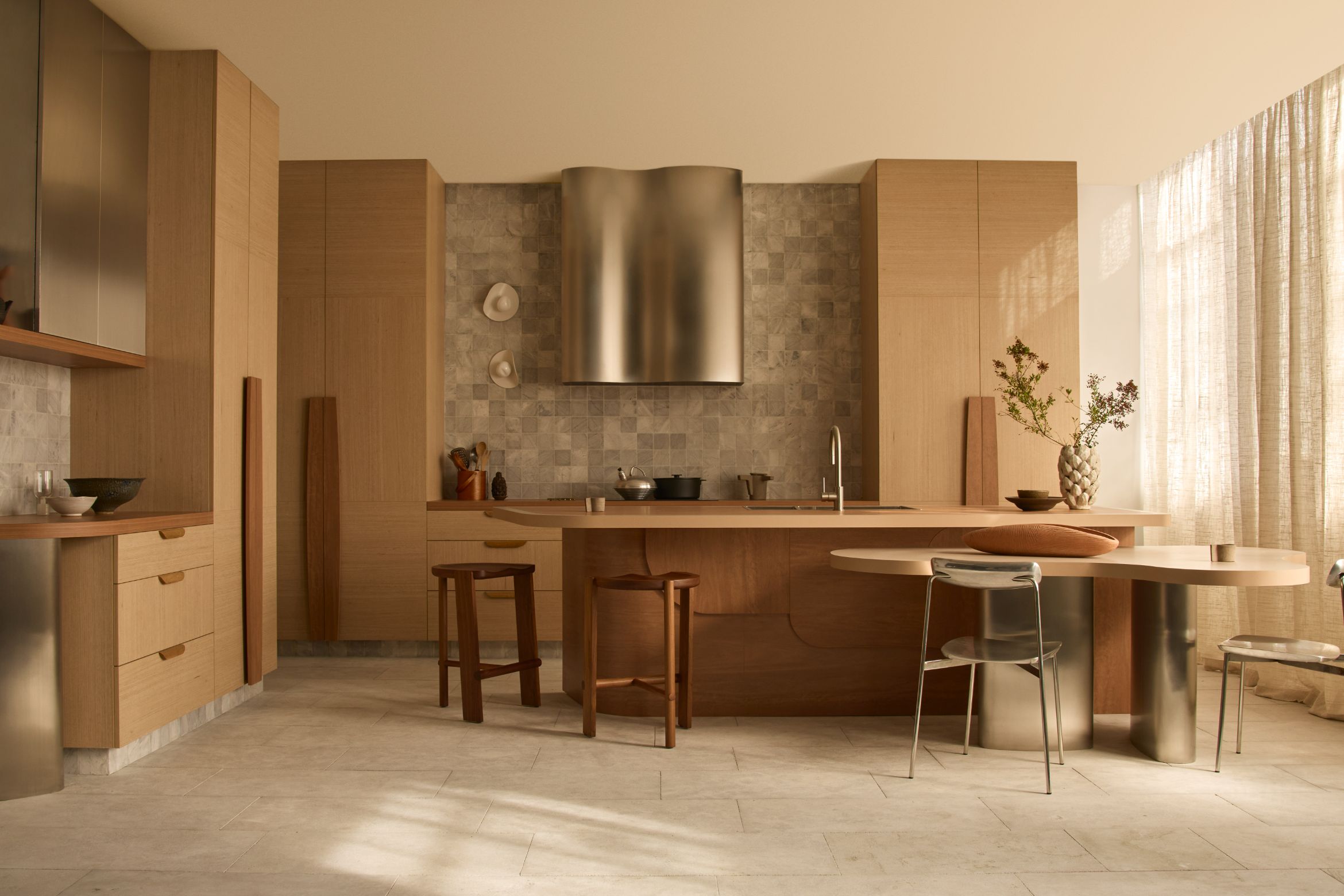When the surrounding environment offers such richness, it follows that design should begin there. Australia’s landscape presents no shortage of material reference: native species with distinctive grain, tonal variation informed by weather patterns, and light that moves with a particular sharpness. In this context, the notion of looking elsewhere feels unnecessary.
The True to Nature collaboration between Laminex and Tom Mark Henry takes this position as its starting point. Developed around Laminex’s Next Generation Woodgrains collection, the project examines how surface material can respond to both built form and ecological context – not through imitation, but by identifying shared characteristics between them.
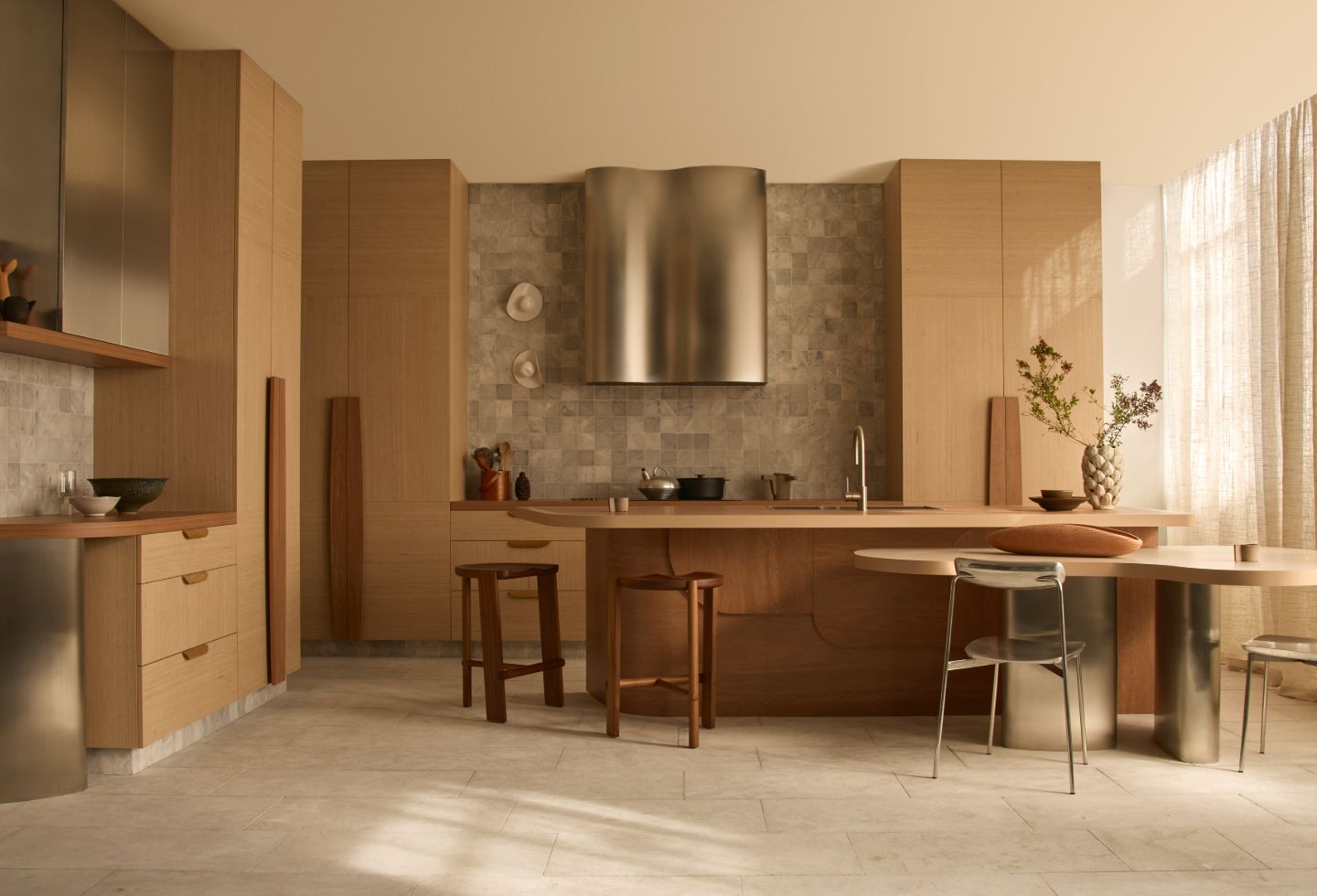
At the centre of the project is a kitchen concept, where Laminex’s Victorian Ash and Blackbutt TrueScale surfaces are applied in alternating grain directions. This generates variation without requiring additional material or embellishment — a subtle outcome that reflects how timber performs in natural settings, where light and grain interact in less predictable, more responsive ways.
Rather than drawing on the landscape as motif, the palette echoes it in temperature and hue. Selections remain within a dry, mineral spectrum, avoiding overt contrast. Colours such as Outback Clay and Bluestone are introduced not to punctuate, but to maintain consistency across surfaces. The result is a scheme that reflects the compositional clarity often found in the landscape itself: variety held within a cohesive field.
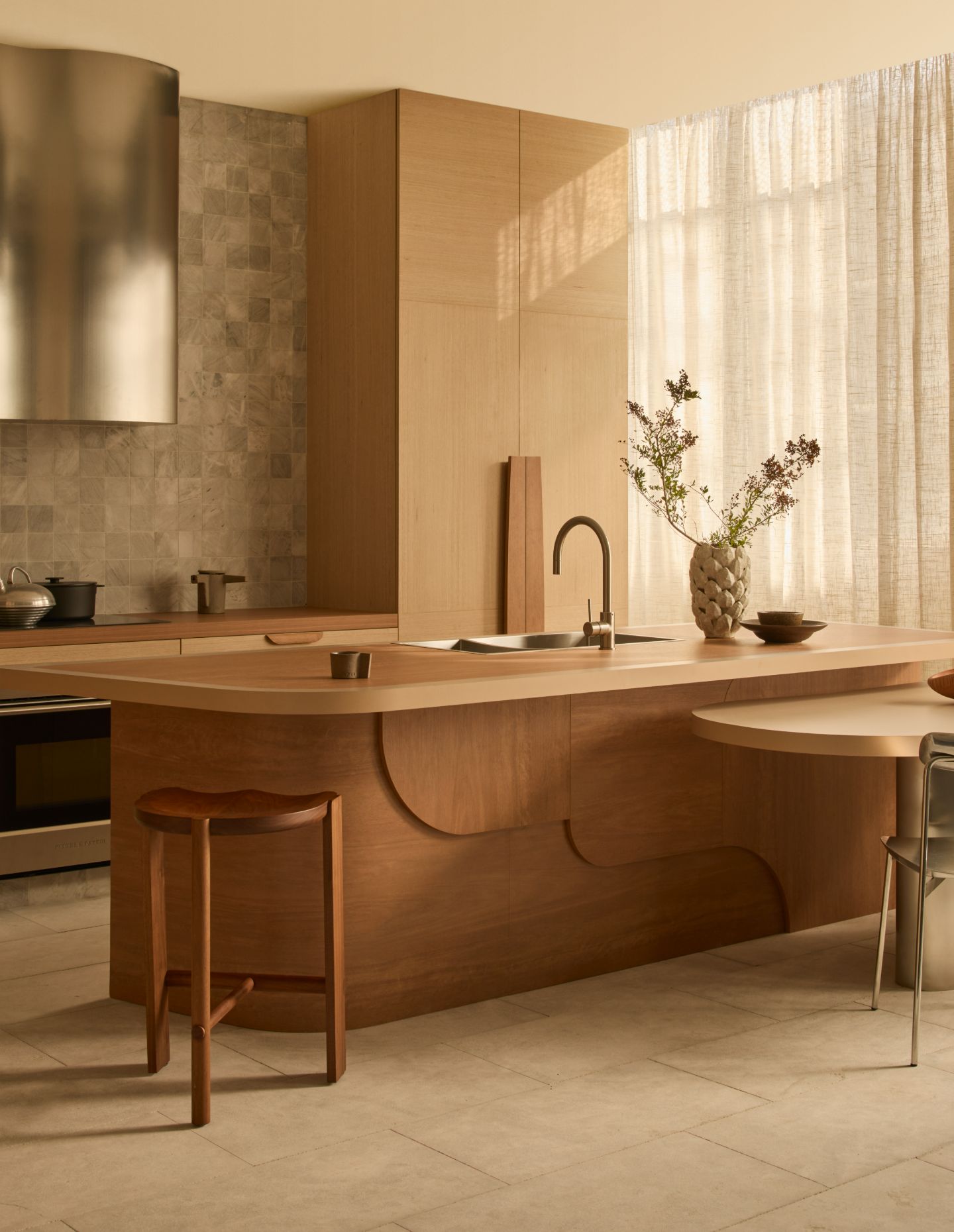
While the project sits firmly within the domain of residential design, its conceptual drivers are environmental. Materiality is used not as decoration but as a register – of place, of change, and of how light animates surface over time.
For Laminex, the project continues its shift towards high-fidelity, low-maintenance laminates that hold up under practical demands while offering increasingly sophisticated finishes. For Tom Mark Henry, it reinforces a design approach that prioritises context and atmosphere. The outcome is not a direct portrait of the Australian landscape, but a built response that feels connected, considered and expressive.
